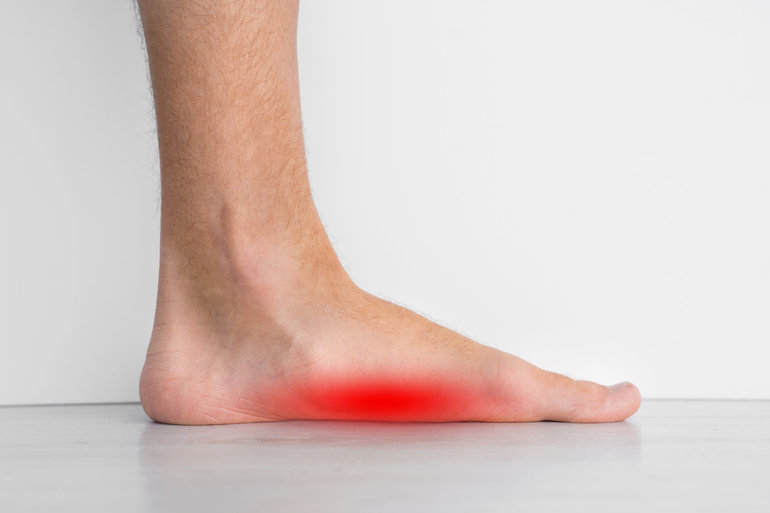The Centers for Advanced Orthopaedics is redefining the way musculoskeletal care is delivered across the region with locations throughout Maryland, DC, Virginia and Pennsylvania.
How to Effectively Diagnose & Treat Flatfeet

Flatfeet can cause pain and significantly disrupt a person’s quality of life. Thankfully, there are good treatment options available for addressing the condition. In this article, we are going to offer up some tips for diagnosing and treating flatfeet.
Diagnosing Flatfeet
A doctor needs to identify why the flatfoot developed. Possible causes include congenital abnormality, a bone fracture or dislocation, a torn or stretched tendon, arthritis, or neurologic weakness.
Be sure to wear your regular shoes to the examination; an irregular wear pattern is another indicator of acquired adult flatfeet. Your physician may request x-rays to see how the bones of your feet align.
Flatfeet Treatment Options
Treatment options depend on the cause and progression of the flatfoot. Conservative treatment options include:
- Making shoe modifications and using orthotic devices such as arch supports and custom-made orthoses
- Taking non-steroidal anti-inflammatory drugs, such as ibuprofen, to relieve pain
- Using a short-leg walking cast or wearing a brace
- Injecting a corticosteroid into the joint to relieve pain
- Rest and ice
- Physical therapy
In some cases, surgery is needed to correct the problem. Surgical procedures can help reduce pain and improve bone alignment. Types of surgery your orthopaedist may discuss with you include:
- Arthrodesis, or welding (fusing) one or more of the bones in the foot/ankle together
- Osteotomy, or cutting and reshaping a bone to correct alignment
- Excision, or removing a bone or bone spur
- Synovectomy, or cleaning the sheath covering a tendon
- Tendon transfer, or using a piece of one tendon to lengthen or replace another
Contact a Flatfoot Specialist Today
For more information about flatfeet, or to talk to a specialist about your flatfeet, reach out to the talented orthopedic team at The Centers For Advanced Orthopaedics today.